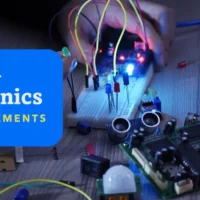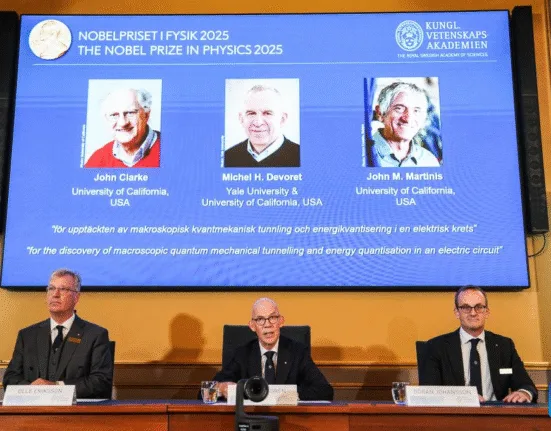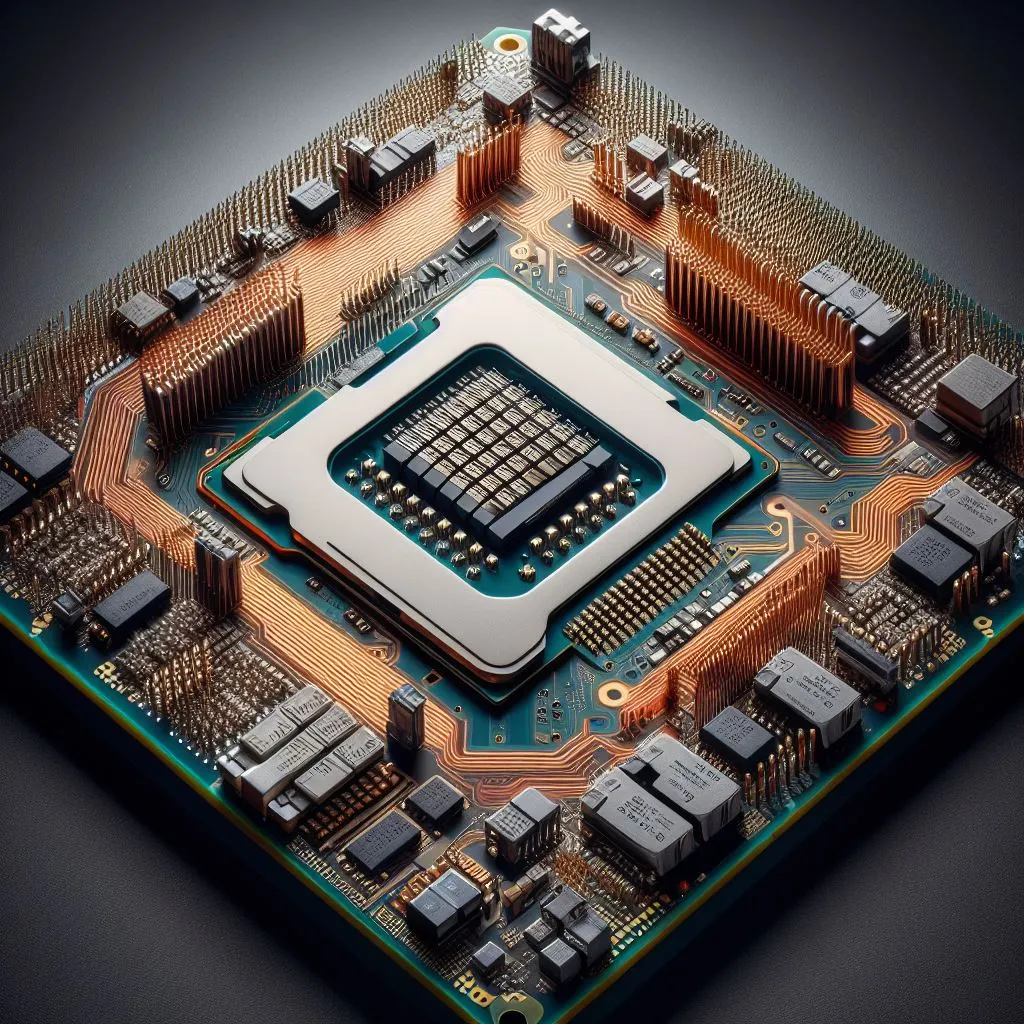Semiconductor Industry Changes: How the Chip World Transformed over last 10 Years
- by WireUnwired Editorial Team
- 14 April 2024
- 6 minutes read
Most of us take computer chips for granted. Those tiny semiconductor processors powering our devices are always out of sight, out of mind just as our brain controlling all the things in the background. Ok then let’s put our gadgets at rest and talk about semiconductor industry changes and how this semiconductor industry behind these chips underwent a mind-blowing metamorphosis over just the last decade. What was once an industry hyper focused on transistor scaling and generalized performance radically transformed itself. From smashing into physical limits to specializing for AI and new apps, the semiconductor industry changes turned semiconductor world upside down in the last 10 years.
In this article, we’ll unwrap the biggest semiconductor industry changes that completely remade chips for the modern era. We’ll look at the roadblocks that hit Moore’s Law, the worldwide race to optimize for AI workloads, earth-shaking manufacturing shake-ups, radical new design approaches, and more semiconductor upheavals. Let’s dive into the epic disruption the chip world experienced.
Semiconductor Industry changes: Moore’s Law Hits the Wall
For around 50 years, semiconductor companies treated Moore’s Law like the holy gospel – the observation that transistors on chips doubled roughly every two years, perpetually boosting performance. But the early 2010s marked the beginning of the end of that free ride.
Packing more and more transistors into tinier semiconductor nodes like 7nm and 5nm was no longer sustainable through traditional methods. Chipmakers had to get wildly innovative, developing new 3D transistor architectures using exotic materials just to keep up with Moore’s Law scaling.
Also Read: Light powered chips are poised to replace current chips , But Why?
Researchers at companies like Intel and TSMC came up with new type of technology like 3D FinFET transistors, gate-all-around nanosheets, and other solutions to keep increasing transistor density.
Despite dumping billions into cutting-edge fabrication facilities, those physics-defying semiconductor adjustments could only go so far. Eventually, those relentless miniaturization-driven performance gains slowed to a crawl. The semiconductor industry desperately needed a whole new way forward beyond traditional processor design.
Semiconductor industry Changes : Processors Get an Identity Crisis
With Moore’s Law hitting a wall, the semiconductor world pivoted hard toward specialization in the 2010s. Instead of designing general-purpose, one-size-fits-all chips, companies scrambled to optimize processors for specific tasks and workloads.
You had firms like Apple, Google, Nvidia, AMD, and eventually even Intel racing to design semiconductor chips laser-focused on accelerating artificial intelligence and machine learning algorithms. Traditional CPUs and GPUs simply couldn’t handle the insane computational complexity required for neural networks and deep learning alone.
Companies rolled out specialized processors like Google’s Tensor Processing Units, Nvidia’s Tensor Cores, Apple’s Neural Engines, and tons more. Entire semiconductor product lines were born devoted just to efficiently crunching AI math. No more compromises – customized silicon was the new norm. The 2010s also saw companies coming up with chips specialised for crypto industry aimed at increasing the efficiency of the mining of coins .
Rather than pursuing the classic do-it-all processor, the semiconductor industry completely embraced ultra-specialization as its future. General computing tasks became just one of many end uses for increasingly customized semiconductor designs.
Also read: All major companies faced revenue decline in year 2023.
Semiconductor Industry Changes :Foundries Overthrow the Establishment
While semiconductor players raced to specialize chips for particular domains, the manufacturing side of the industry consolidated around just a couple of third-party foundries kings – triggering another seismic semiconductor industry shakeup.
In the 2010s, contract foundries like TSMC and Samsung surged to dominate cutting-edge semiconductor fabrication at the most advanced process nodes like 3nm. From Apple and AMD to Nvidia and Qualcomm, nearly all the major chipmakers outsourced production to TSMC’s ultra-modern facilities.
Also Read: Semiconductor fabrication 101
TSMC managed to pull ahead as the indisputable leader assembling the world’s most advanced semiconductor chips. This represented an earth-shattering industry change. For decades, vertically integrated companies like Intel led semiconductor manufacturing innovation. But as chipmaking grew wildly expensive and complex in the 2010s, the fabless foundry model won out.
However, concentrating the bulk of the world’s leading-edge semiconductor output into just a couple facilities sparked fears over national security vulnerabilities and supply chain risks. That kicked off an intensifying semiconductor arms race between the US and China to rapidly reshore more domestic chipmaking capabilities.
The U.S. CHIPS Act tried to revive America’s flagging semiconductor manufacturing prowess by injecting $52 billion in incentives to build new cutting-edge facilities on American soil. Reducing semiconductor self-sufficiency emerged as a critical priority for economic and national security reasons worldwide.
Semiconductor industry changes : Semiconductor World Goes Modular
As Moore’s Law scaling stalled and design demands skyrocketed, the semiconductor industry had to get creative with a brilliant modular approach – the rise of “chiplets” in the late 2010s. Instead of traditional monolithic processors, chipmakers started slicing up chip components into reusable tiled building blocks.
These interchangeable semiconductor chiplets – containing elements like CPU cores, GPUs, AI accelerators and more – could be mixed, matched, and interconnected in any combination via innovations in advanced chip packaging technologies.
AMD pioneered this model with its Ryzen processors, breaking them up into a modular system of chiplets boosting performance. Before long, semiconductor heavyweights like Intel, Nvidia, Meta and others all embraced these modular chiplet architectures.
What was once a semiconductor afterthought became a mission-critical way to optimize chips. Advanced packaging rapidly emerged as an ingenious technology driver enabling more efficient, powerful processors – sometimes as vital as the chiplets themselves.
Semiconductor industry changes: Semiconductors Become Global Battleground
Beyond just technical changes, the 2010s saw semiconductors escalate into a full-blown arena for clashing geopolitical interests and ambitions between world superpowers. Reducing semiconductor self-sufficiency became a top strategic priority for nations worldwide.
China in particular got hyper-aggressive, viewing its reliance on foreign chips from companies like Qualcomm and Intel as a glaring economic and national security vulnerability. Over the decade, China shoveled well over $100 billion into cultivating its own domestic semiconductor industry from the ground up.
Also Read: Russia’s semiconductor giant produced chips are facing defect ratio of 50%
Beijing dreamed of going toe-to-toe with – and eventually dethroning – heavyweight semiconductor players like TSMC, Samsung, Nvidia, Intel and more. Hundreds of new Chinese chipmakers, talent pipelines, and advanced manufacturing facilities sprung up.
But despite those tidal waves of investment, China’s semiconductor capabilities remain generations behind global leaders in the 2020s. Ongoing U.S. export controls and restrictions created steep barriers to Beijing catching up on cutting-edge processes too.
Make no mistake, semiconductors have devolved into a symbolic battleground representing technological superiority and geopolitical clout between nations. As we hurtle into the 2030s, chip independence remains an obsessive priority for superpowers and allied countries alike.
Also Read: US releases 2nd list of semiconductor export ban chipsets
What’s Next Beyond These Seismic Semiconductor Shifts?
Looking ahead, the innovations we’re glimpsing today are likely just the tip of the iceberg for future semiconductor breakthroughs. Traditional processors may soon get outmoded entirely, displaced by ultra-specialized chips for AI, quantum computing and radically new computing architectures.
Emerging technologies harnessing the potential of modular chiplet designs, advanced packaging, new materials and process nodes could catalyze chips with mind-bending capabilities we can’t even fathom yet. Perhaps semiconductors mimicking the human brain’s processing patterns. Or semiconductors fused with exotic state-of-the-art memory tech, completely redefining computing performance and efficiency on a fundamental level.
Semiconductor Industry changes :Wrapping up…..
Whatever comes next, one thing is certain – given their vital role powering virtually all technological progress over the last decade of rapid transformation, semiconductors will remain the fundamental building blocks propelling humanity’s ambitions for a long time to come.
So there you have it – the semiconductor industry underwent more changes in the 2010s than the previous 50 years, and shows no signs of slowing down its breakneck pace of disruption and innovation. What a wild ride it’s been already, with seemingly only more thrills to come for chips in the decades ahead.
Discover more from WireUnwired Research
Subscribe to get the latest posts sent to your email.







